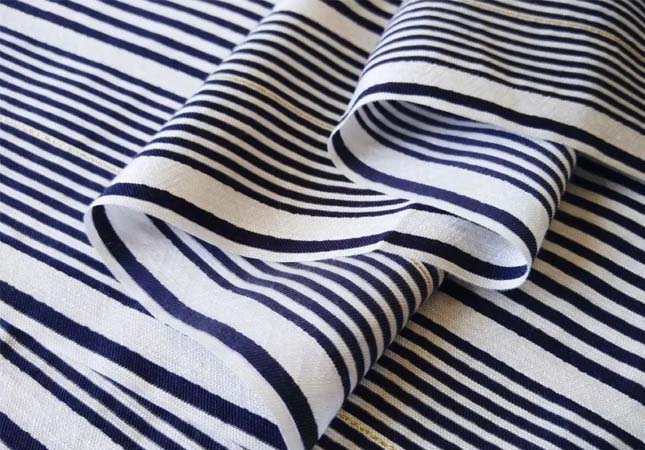Woven fabrics are traditionally woven by shuttles driving the weft yarns back and forth in the warp yarns on the weaving machine. Generally, there are obvious edge structures on both sides, and both grey fabrics and finished fabrics are flat. The knitted grey fabric is commonly in cylindrical shape, and becomes flat after opening and shaping.

Yarn Count Density
Yarn count density is an important indicator of the difference between fabrics. It refers to the inch count of cotton yarn, that is, the cotton yarn weighing 1 pound has how many 840 yards, is called how many yarns counts it has. For example: if 1 pound of cotton yarn contains 32 counts of 840 yards, it is called 32 lbs. The higher the count number is, the finer the yarn will be. There is also an index of denier to indicate the thickness of the fiber. 1 D means a fiber in 9000m length and in 1g weight. If the 9000-meter-long fiber weighs 70 grams, it is 70D. Denier is opposite of the yarn count density. The higher the “D”number is, the thicker the fiber will be.
Generally, the yarn count density of non-elastic fabrics refers to the yarn count density of grey fabrics, and will change correspondingly when gray fabrics become finish products.
Most non-elastic fabrics have a grey fabric width of 47” or 63”, but usually changed to 44” or 58” respectively when the grey fabrics became finish fabric roll.
Main Types of Woven Fabrics
1. Plain Woven Fabrics
The plain woven fabrics typically is woven by weft and warp yarns by up and down movements, which is the most common weaving method. The plain woven fabrics that are thin and light usually are called poplin,while the thick and rough plain woven fabrics are generally named canvas.
2. Twill Woven Fabrics
There are generally 3 types of twill fabrics: 2/1, 3/1, 2/2. The numbers refer to the ups and downs of the warp. 3/1 means that the warp floats on top of 3 weft yarns and sinks under 1 weft yarn, then floats on top of 3 weft yarns again. This kind of weaving skills and its fabric products also called yarn card or thread card.
3. Jacquard Fabrics
Most jacquard fabrics are woven by complex dobby machine,which usually refer to the tiny jacquard fabrics such as checkered, wick strip, chevron and satin strip.
4. Velvet Fabrics
Velvet fabrics mainly including corduroy and velveteen. The main features of corduroy is that the weft density is much higher than the warp density because the pile yarn is generated from weft yarn after opening.
Dyeing Methods
There are 2 methods of dyeing and finishing for woven fabrics: dyeing and yarn-dyed weaving.
Dyeing means to send the grey fabric to the dyeing factory after weaving process is finished. Then the desizing, singeing, scouring, mercerizing, (sanding) dyeing, shaping, pre-shrinking, and softening will be done to the grey fabric, finally obtain the dyed fabric. It is almost same as the printing process, which is mainly changing the dyeing steps to printing. Yarn-dyed weaving refers to dyeing the yarn first and then warping, sizing, weaving, and finishing to obtain finished cloth roll, which are mainly in plaid and sliver patterns.
Dyeing Material
The most important factor that have influence on dyeing effect is the activity of dyeing materials. The reactive dyed, also known as reactive dyes and strychnine, also known as vat dyes is the most popular actice dyeing materials. Among them, the color fastness of vat dyes is the best. But 1 dye material cannot cover all the color spectrum, some colors can only be made with one dye, such as navy blue, and the color spectrum of vat dyes is dominated by medium and light colors.
There is also a coating material, which fades greatly after washing, and is widely used in the manufacture of clothes that have a sense of staleness after washing.




